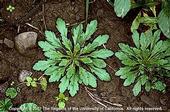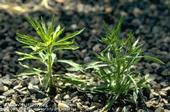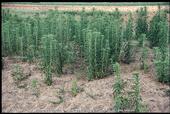- Author: Ben Faber
- Posted by: Gale Perez

A recent call about the poor control of marestail (horseweed, Conyza canadensis) to glyphosate (Roundup®) wasn't surprising, but that paraquat didnt do the trick was. It turns out that there is multiple resistance to the materials. If horseweed is resistant to glyphosate it is possibly going to be resistant to paraguat which also means that hairy fleabane which has glyphosate resistance could also show resistance to paraquat. A recent study reports on the increased Conyza resistance to paraquat (Distribution of Conyza sp. in Orchards of California and Response to Glyphosate and Paraquat, Moretti et al,
- Author: Ben Faber
- Re-posted by: Gale Perez

From the Topics in Subtropics blog ∴ June 15, 2016
Researchers have now confirmed that six glyphosate-resistant weed species have been identified in California. Four have been known to exist for some time; they are horseweed (marestail, Conyza spp.), hairy fleabane, rigid ryegrass and annual ryegrass. To that list, junglerice and Palmer amaranth in the Central Valley have been recently added to the list. Additional weeds that have become more of a challenge to control and are on the suspect list are goosegrass and, in the central San Joaquin Valley, the summer grasses sprangletop and witchgrass.
There have never been a lot of...
- Author: Oleg Daugovish
- Posted by: Gale Perez

From the Topics in Subtropics blog :: July 5, 2013
It is not always easy to kill weeds with herbicides for several reasons, but if you apply the right material at the right time to susceptible weeds you expect control. But you should never assume it, because resistant weeds rely on this assumption.
Repeated use of herbicides with the same mode of action (usually the same target site within plant) selects for naturally occurring resistance traits in weed population. The few resistant weeds proliferate since there is no longer competition from susceptible types and if other control measures are not...
- Author: Kurt J. Hembree
- Posted by: Gale Perez

While both horseweed and hairy fleabane have been here since farming began in the region, it's only since about 2003 that they have become such an obvious problem, particularly in tree and vine systems and non-crop areas.
In the past, the traditional use of combinations of pre- and postemergence herbicides and/or cultivation was adequate to manage them. However, recent changes in environmental regulations, economics, herbicide use patterns (toward more postemergence-only programs), treatment timing, and glyphosate-resistant biotypes have all contributed to the problem. Other factors contributing to their spread include, high seed production, wind dissemination, lack of seed dormancy requirement, preference for undisturbed areas...
- Author: Douglas J Munier

Glyphosate resistant ryegrass has been a persistent problem since appearing in almond orchards in the Sacramento Valley in the late 1990’s. It is a winter annual weed, but under irrigation it can germinate any time of the year. This year round germination pattern wasn’t noticeable in the Sacramento Valley when it was effectively controlled by glyphosate. Summer and early fall germinating ryegrass plants are particularly difficult to control at the typical November to December herbicide timings because they are larger established plants at the time of application.
Pre-emergence herbicides are a good way to deal with this extended germination period. June/July pre-emergence herbicide treatments...


